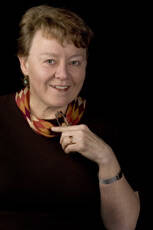Most people today think of social networking as an electronic activity, but long before I used a cellphone and an iPod Touch, reading formed my social network in one important respect. Reading connected me, often serendipitously, to friends—fictional, historical and contemporary.
As a high school freshman reading J. D. Salinger’s novel Franny and Zooey, I found compelling Franny’s obsession with a wandering Russian peasant who prays the Jesus prayer. Then I came across Way of a Pilgrim and realized (Eureka!) this must have been the book Franny read, for it describes that peasant. Years later while on a retreat, I picked up the Philokalia, a collection of Eastern Orthodox writings by the starets, or holy men, who taught that prayer. From Oz, I had landed in Kansas.
Since college, I have read about the Bloomsbury group, an intellectual community that coalesced in London in the 1920s and ’30s. My attention fixed briefly on the life and writings of Virginia Woolf, then on the paintings by Vanessa Stephen (Virginia’s sister) and Duncan Grant and the Omega Workshops of decorative art they founded with the art critic Roger Fry. Last year I discovered Susan Cheever’s American Bloomsbury, which describes a group outside Boston, shepherded by Ralph Waldo Emerson, that included the family of Louisa May Alcott, Margaret Fuller, Nathaniel Hawthorne and Henry David Thoreau. That discovery was like finding Bloomsbury’s lost relatives. I’m re-reading Alcott and Thoreau, armed with new insights about intellectual communities.
During my 20s, I binged on books by Thomas Merton, the Trappist monk whose writings introduced thousands like me to his literary dialogue partners. Through reading, I tracked down, among others, Julian of Norwich, Flannery O’Connor and Dorothy Day. But in pointing toward the Catholic Church, Merton linked me to a community much larger than Facebook.
In graduate school, I met friends of Merton’s friends. In one class sat Robert Ellsberg, now publisher of Orbis Books, then completing By Little and By Little, a collection of Day’s letters, and Sally Fitzgerald, editor of A Habit of Being: Letters of Flannery O’Connor. I could see that the faith of Day and O’Connor animated the lives, not just the books, of my two “classmates.” That caused me to read Day and O’Connor more deeply, trying to discern what their example meant for me.
As a young editor at Commonweal, I hit a friends-of-Merton jackpot: Patrick Jordan, now managing editor, had lived next door to Day and had been her co-worker as a former editor of The Catholic Worker newspaper; his children had grown up in her venerable arms. Anne Robertson, production editor when I joined the staff, was still exchanging letters with Merton’s close friend Robert Lax, a poet then living in Greece. She and Lax had worked with the artist Emil Antonucci on Jubilee, a progressive Catholic journal now defunct. And because Antonucci was the designer at Commonweal and at Church magazine, it was my privilege to work with him for two decades. That changed me.
Knowing Jordan and Ellsberg, two committed young men whose lives were shaped by encountering Day, I could imagine Merton at the Worker decades earlier learning from her, observing her. Through Robertson and Antonucci, I felt party to the creative camaraderie they shared with Lax, and he with Merton. These friendships took place among peers, but they stretched across generations, and all of them were linked to reading Merton.
Reading can and does link people socially. A life of reading can lead one to community and lifelong friendships, some of which inspire and deepen faith.









A recounting of his 1964 trip to NYC is here:
http://fatherlouie.blogspot.com/2009/11/meeting-dt-suzuki-in-nyc-1964.html